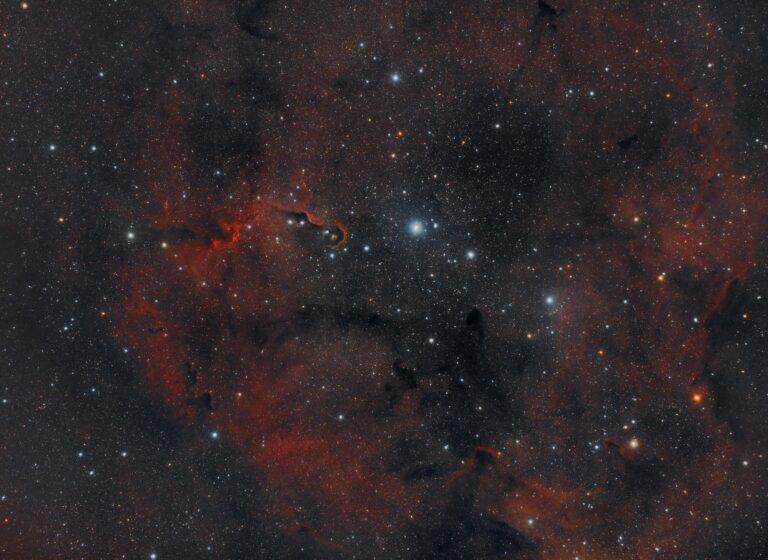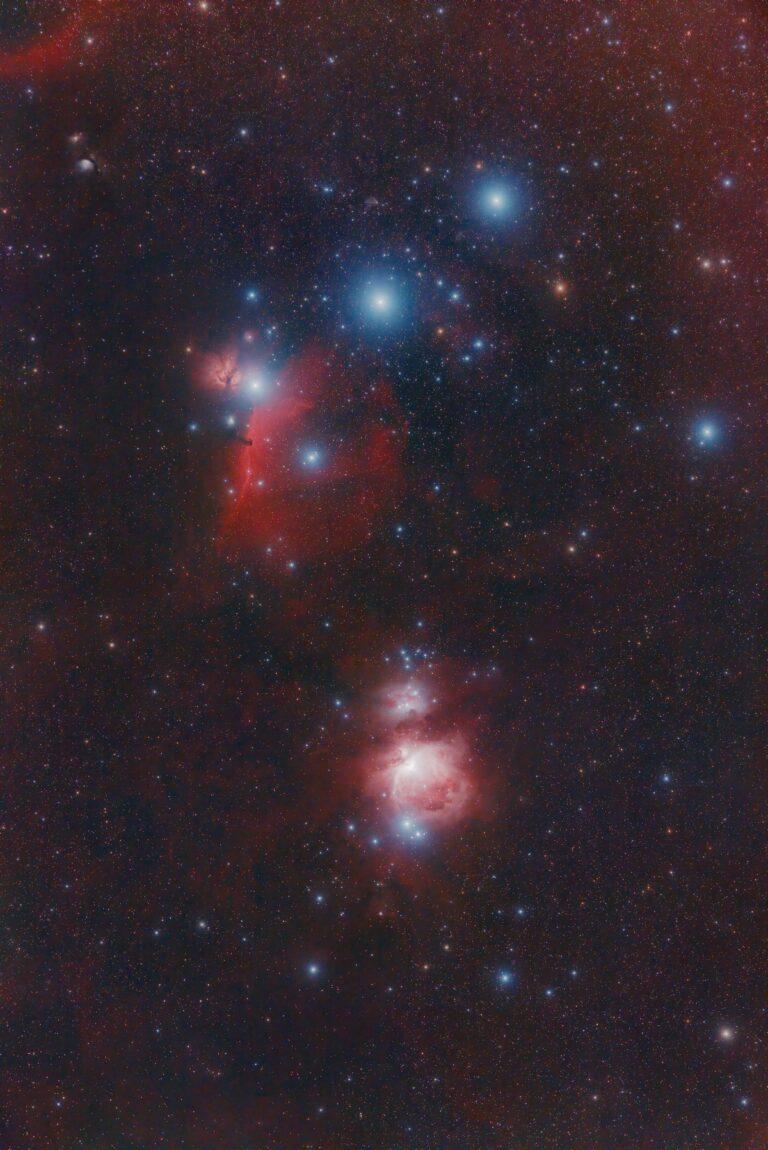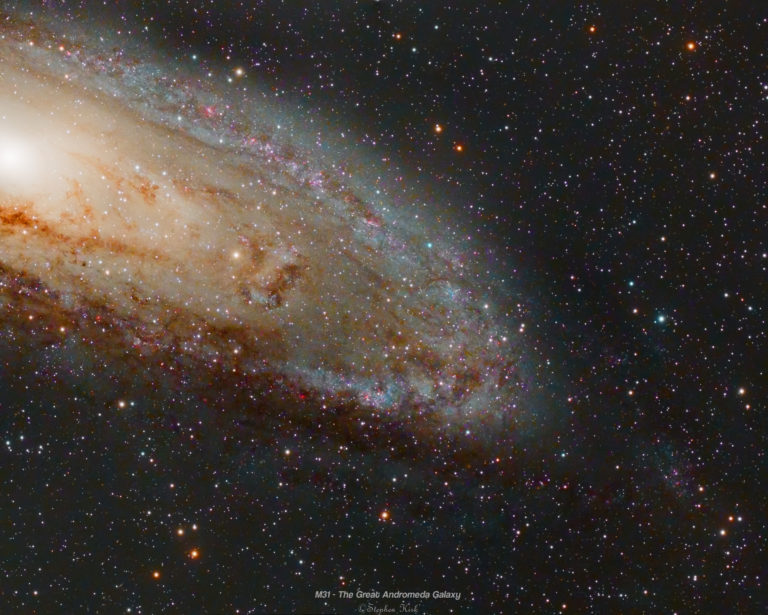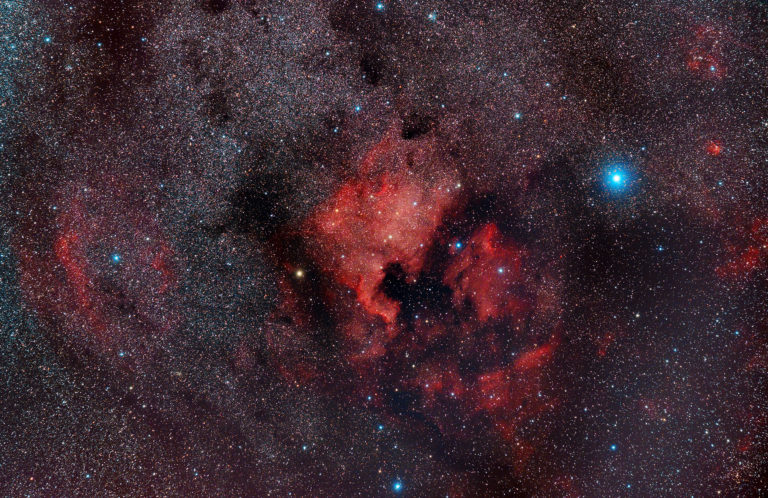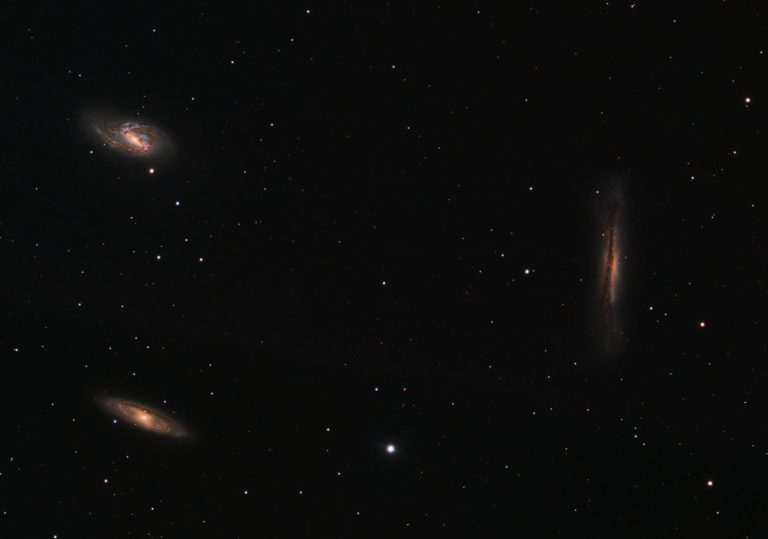IC1396 is a fabulous and well known nebula complex in the Far Northern constellation of Cepheus and is about 2400 light years distant. It is comprised of a huge cloud of excited hydrogen gas known as a HII region (pronounced H-two). Some nice features include the Elephant’s Trunk nebula embedded in it.Full resolution (8Meg) image here (opens in a new tab): https://skastro.net/wp-content/uploads/2024/01/IC_1396_WF.jpg IC1396 Nebula in Cepheus Technical Details Imaged from my back yard in Nottingham, UK on the nights of 15 and 16th October 2023 when almost directly overhead. It consist of 54 x 240s exposures with a QHYCCD One Shot Colour (OSC) camera with a gain of 30 and offset of 0 through a Takahashi FSQ85 telescope with the 0.67 focal reducer/flattener.Sky conditions and transparency were both poor, as usual for the UK in all but the rarest nights of seeing.I hope you like it 🙂 IC1396 Annotated Finder Chart…
An image of Orion from January 2023 taken with a QHY268C cooled astronomy camera mated with a Samyang 135mm lens to give a very wide field view. Orion In A Wide Field with QHY268C and a Samyang 135mm DLSR lens Full sized image here (opens in a new tab).The image is composed of 56 x 120s exposures at F2.8. I used my wide field rig with autofocus to get the stars and nebulosity sharp and tight. I captured flats, darks and dark-flats. Mounted on NEQ6 with a guider scope and image data captured with NINA. All pre and post development is done in PixInsight.Captured over two nights 20th and 23rd January 2023 when Orion was high to the south. From my back yard in Saxondale, Nottinghamshire – suburban, Bortle 4-5.I have also captured the Constellation of Orion here. Annotated Version Finder Chart
M31 is one of the most favoured and popular imaging targets in the night sky; it is bright, large and very photogenic. I have imaged this galaxy numerous times, for example, in this LRGB version and in this OSC version. Since the galaxy is so large, each of these images is set in a wide field, one of 3 degrees horizontally and 2 degrees vertically across the field of view which equates to six times the diameter of the full moon. Many newcomers do not appreciate how large these objects are in the sky. Large but VERY dim! M31 in OSC from a QHY268C and Takahashi FSQ85 refractor The above image is at a resolution of 4.16arcsec/pixel. On such a large object as M31 this allows the entire galaxy to be imaged in one field of view on a wide field refractor such as the FSQ85 but does not allow…
North American and Pelican Nebulae with Samyang 135mm lens and QHY268C Camera This is my first ever image capture with the excellent NINA software. I used my wide-field rig which consists of the Samyang 135mm lens and QHY268C OSC camera using an IDAS 2″ LP filter. The wide angle view brings out the North American nebula (NGC 7000) and The Pelican nebula to its right very nicely. There is also a lot of other background luminosity in the image.The image set is a modest 18 x 180s exposures captured in August 2021, all the data being binned 1×1. Pre-processed and processed in PixInsight with a few tweaks in Photoshop.
The Leo Triplet is a popular and famous group of galaxies in the constellation of Leo, best viewed in late winter/early spring in the Northern Hemisphere. They are often imaged together like this as the triplet or as individual galaxies. They are located about 35 million light years away and consists of the Messier galaxies M66 (top left in the image), M65 (bottom left ) and to the right we have NGC 3628, commonly called The Hamburger Galaxy. The galaxies are easily visible in a small to mid-sized telescope as faint smudges in this isosceles triangular pattern. The galaxies are sometimes called the M66 Group but ask any astronomer and they will immediately know what you mean if you mention the Leo Triplet! Another famous galaxy group in Leo is the M96 group. The Leo Triplet Technical Details Image captured from my back yard observatory in Nottingham, UK on the…

